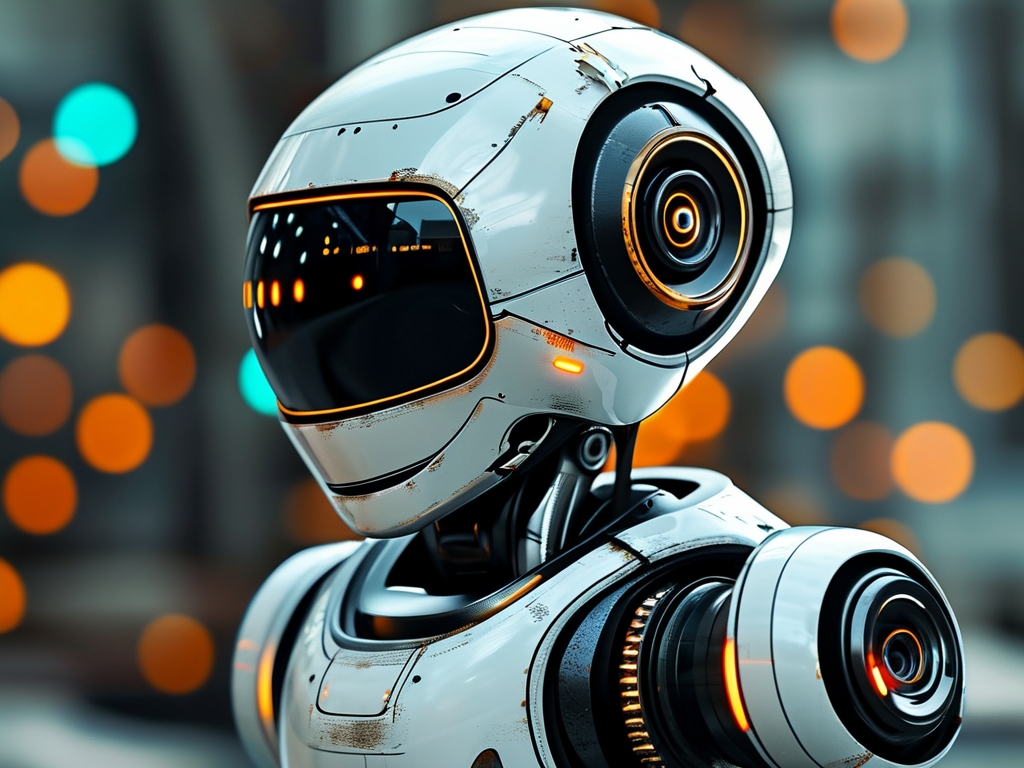In the rapidly evolving field of robotics, rotational motion stands as a cornerstone of functionality. From industrial assembly lines to surgical robots, the ability to rotate with precision defines performance. This article dives into the principles, applications, and innovations driving robotic rotation technology.

1. The Fundamentals of Robotic Rotation
At its core, robotic rotation relies on three interconnected components: actuators, sensors, and control algorithms.
- Actuators: Electric motors, particularly servo and stepper motors, are the most common drivers. Servo motors excel in closed-loop systems, adjusting torque and speed in real time, while stepper motors offer precise angular increments without feedback.
- Sensors: Encoders and resolvers track rotational position and velocity. Optical encoders, for example, use light patterns to measure angular displacement with micron-level accuracy.
- Control Algorithms: Proportional-Integral-Derivative (PID) controllers dynamically adjust motor output to minimize errors between desired and actual positions.
2. Advanced Rotation Mechanisms
Modern robots employ specialized mechanisms to enhance rotational capabilities:
- Harmonic Drives: These compact gear systems reduce backlash and increase torque density, critical for space-constrained applications like robotic arms.
- Magnetic Levitation (MagLev) Bearings: By eliminating physical contact, MagLev reduces friction and wear, enabling ultra-high-speed rotations in medical imaging devices.
- Omni-Directional Wheels: Used in mobile robots, these wheels combine rotation and lateral movement, allowing seamless navigation in complex environments.
3. Applications Across Industries
Industrial Automation
In manufacturing, robotic arms with 6-axis rotation weld, assemble, and package products. For instance, automotive assembly lines use rotational joints to position components within 0.01mm tolerances.
Medical Robotics
Surgical robots like the da Vinci system rely on wrist-like rotational joints to mimic a surgeon’s hand movements, enabling minimally invasive procedures.
Consumer Electronics
Drones use gimbal systems with 3-axis rotation to stabilize cameras mid-flight, while robotic vacuums employ rotating brushes to navigate household obstacles.
4. Challenges and Breakthroughs
Despite progress, key challenges persist:
- Energy Efficiency: High-torque rotations drain battery life in mobile robots. Innovations like regenerative braking, which recovers kinetic energy during deceleration, are mitigating this issue.
- Heat Dissipation: Continuous rotation generates heat, risking component failure. Liquid cooling systems and phase-change materials are now being integrated into motor designs.
- Miniaturization: Shrinking rotational systems for micro-robotics (e.g., nanobots) demands novel materials like shape-memory alloys.
5. The Future of Rotational Technology
Emerging trends are reshaping the landscape:
- AI-Driven Adaptive Control: Machine learning algorithms predict wear-and-tear patterns, optimizing rotation parameters to extend hardware lifespan.
- Soft Robotics: Flexible actuators made of polymers enable biologically inspired rotation, such as octopus-like tentacles for underwater exploration.
- Quantum Sensors: Next-gen sensors leveraging quantum entanglement could achieve unprecedented rotational precision for aerospace applications.
Robotic rotation technology is far more than spinning gears—it’s a symphony of engineering, physics, and innovation. As industries demand higher accuracy, speed, and versatility, breakthroughs in materials science, AI, and energy systems will continue to push the boundaries of what rotating machines can achieve. Whether in a factory or a human body, the silent spin of a robot’s joint remains a testament to human ingenuity.


